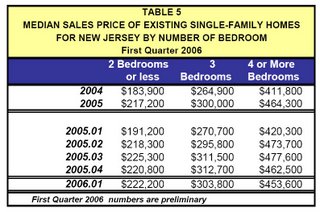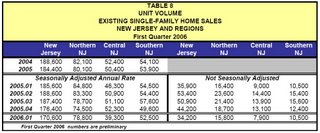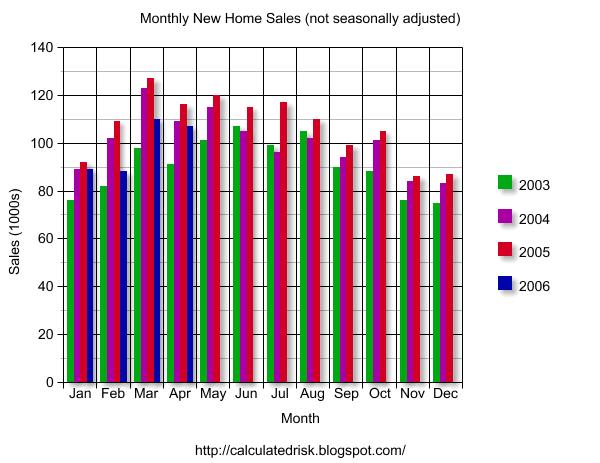Lowball! takes a look at home sales over the past week from a very different perspective. For those new to Lowball!, a lowball offer is when a buyer offers a significantly lower bid than asking in hopes that the seller accepts the offer. We take a list of home sales over the past week and pick out the sales that have the highest percentage difference between asking price and selling price.
The purpose of Lowball! is to show buyers that the market has changed and buyers now have considerably more leverage than sellers. Just a short time ago, Lowball! offers would have been laughed at and discarded, however, not any more. The fact that so many under-asking offers are being accepted is clear proof that the market is changing.The list does not contain all sales, I hand-pick the most interesting sales from the list. These listings might be the highest dollar drops, biggest percentage reductions, or sales in towns that are thought to still be 'hot'. Please note, even with double digit percentage reductions, these homes are still incredibly overpriced.
Not going to break this up this week, primarily due to time constraints. The activity for this time period is very different than what we saw over the last period. It seems that the majority of the lowball offers are now the lower priced side. On to the list, right off the top.
MLS# 2264965 - Wanaque, NJ
List Price $199,900
Sales Price $125,00 (37.5% Lowball)
MLS# 2220651 - Sussex, NJ
List Price $155,000
Sales Price $100,000 (35.5% Lowball)
MLS# 2101025 - Hope, NJ
List Price $99,900
Sales Price $67,000 (32.9% Lowball)
MLS# 2222382 - Washington Boro, NJ
List Price $119,900
Sales Price $95,000 (20.8% Lowball)
MLS# 2214050 - South Orange, NJ
List Price $215,000
Sales Price $175,000 (18.6% Lowball)
MLS# 2213350 - Springfield, NJ
List Price $404,000
Sales Price $335,000 (17.1% Lowball)
MLS# 2065407 - Millburn, NJ
Original List Price $2,995,000
List Price $2,499,000
Sales Price $2,075,000 (17% Lowball, 30.7% off Original List)
MLS# 2250897 - Newark, NJ
List Price $595,000
Sales Price $500,000 (16% Lowball)
MLS# 2265714 - Plainfield, NJ
List Price $294,900
Sales Price $253,000 (14.2% Lowball)
MLS# 2096841 - Millburn, NJ
Original List Price $1,595,000
List Price $1,395,000
Sales Price $1,200,000 (14% Lowball, 24.8% off Original List)
MLS# 2072465 - Ogdensburg, NJ
List Price $259,900
Sales Price $225,000 (13.4% Lowball)
MLS# 2105998 - Elizabeth, NJ
List Price $289,900
Sales price $251,000 (13.1% Lowball)
MLS# 2235371 - Newark, NJ
List Price $299,000
Sales Price $260,000 (13% Lowball)
MLS# 2227732 - Hawthorne, NJ
List Price $399,995
Sales Price $350,000 (12.5% Lowball)
MLS# 2238623 - Westfield, NJ
List Price $2,195,000
Sales Price $1,937,000 (11.7% Lowball)
MLS# 2257589 - Washington Boro, NJ
List Price $260,000
Sales Price $230,000 (11.5% Lowball)
MLS# 2202675 - Fanwood, NJ
Original List Price $475,000
List Price $450,000
Sales Price $400,000 (11.1% Lowball, 15.8% off Original List)
MLS# 2238660 - Ridgewood, NJ
Original List Price $519,000
List Price $509,900
Sales Price $457,000 (10.4% Lowball, 11.9% Lowball)
The last listing here is a very special one. The current seller (Prudential Relocation) purchased this property on 12/12/2005 for $507,250, and has sold it at a substantial loss.
The original owner tried to sell the home, unsuccessfully. It was originally listed on 6/2005 for $599,000 (MLS# 2085164) where it sat for 101 days. It was reduced to $545,000 before it was withdrawn. It was relisted under a new MLS number (2211162) on 11/05 at $539,000 where it sat for an additional 84 days, being reduced again to $519,000 before being withdrawn. The current listing went active in January of this year at an OLP of $519,000. The accurate Lowball! amount would be somewhere around 23%, with the seller taking a $50k loss plus commission and other expenses.
Caveat Emptor!
Grim




